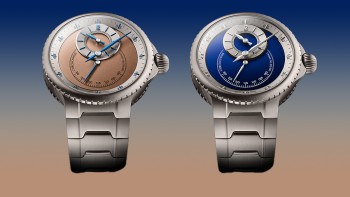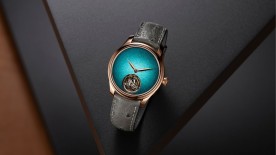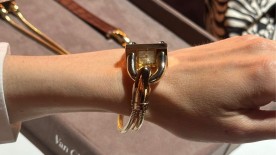“We’ve successfully evolved over the past decade, but are we ready for a revolution?” Chronoswiss CEO Oliver Ebstein said this was the starting point of the Chronoswiss Pulse at a meeting two years ago, adding that the “question stuck with us and kept us awake at night”.
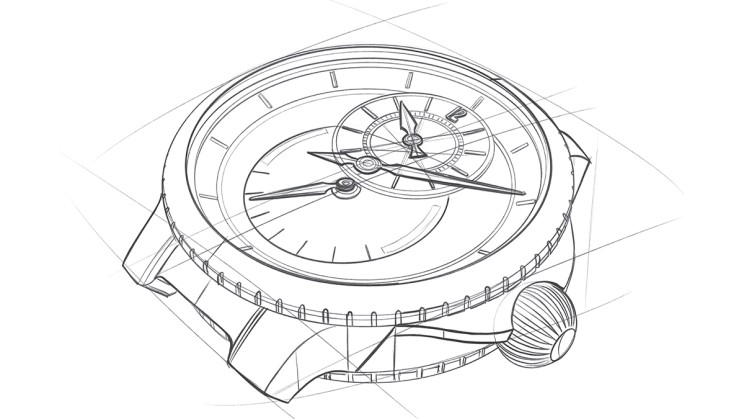
So, what does this revolution entail?
Pulse One is still undeniably Chronoswiss, as it is a regulator watch with a pilot-watch-inspired onion crown, both tell-tale hallmarks of the 42-year-old brand owned by the Ebstein family. But now comes a new, sleek (12.75 mm) titanium case with a seamlessly integrated titanium bracelet with entirely redesigned lugs. Pulse One comes with two different dial colours: a 4N-galvanised golden sand, or a deep blue, achieved by CVD-coating.
Even though brands like Ressence, Zenith, A. Lange & Söhne and several others have made integrated titanium pieces of late, Mr. Ebstein says it is not at all about jumping on the bandwagon. “I don’t believe in just following trends. The goal was never to create ‘just another watch with an integrated bracelet’. We wanted to make a Chronoswiss interpretation—something different, something spectacular, yet still wearable. The Pulse One ticks all those boxes. The bracelet flows seamlessly into the case, creating a perfect balance between sportiness and elegance,” he said.
It is also notable that despite a rather loud trend giving the feeling that “everybody” is making titanium watches in the last years, the export of “other metal” watches has dropped with 27% by volume since 2021.

“Titanium is lighter, making it incredibly comfortable to wear. It’s stronger, meaning it’s built to last. It’s hypoallergenic, perfect for those with sensitive skin. We use Grade 5 titanium, the highest-quality titanium available in watchmaking. It’s more resistant to corrosion, and unlike other grades, it can be polished, allowing us to achieve that mix of brushed and polished finishes that give the Pulse One its striking aesthetic,” Mr. Ebstein said about the material, which in its raw state has a melting point of 1,668°C.
Speaking of trends, the market has also moved towards smaller timepieces, often below 40 millimetres. A few years ago, 44mm was the norm for Chronoswiss, but now most of its cases are 40-42 millimetres. “For us, size is not just about trend—it’s about function. Our complicated dial structures, complications and hand-finished guilloché patterns require space. Think of it like a theatre stage—the actors are gear trains, bridges, and retrograde seconds, and they need a certain stage size to truly shine,” Mr. Ebstein explained about the regulator with decentralised hour at 12 o’clock, central minutes and a retrograde second at six o’clock.
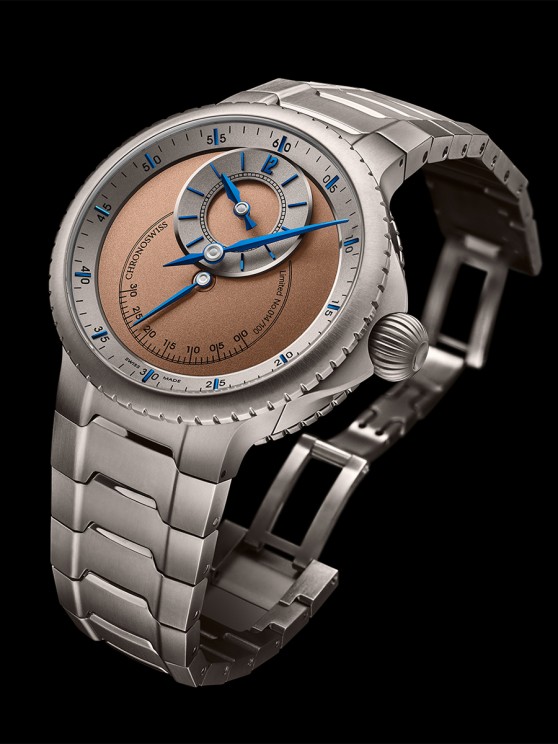
If you turn the watch around, the backstage is equally impressive. The ruthenium-plated C. 6001 movement, one of five unique propriety movements made by Chronoswiss together with La Joux-Perret, features a tungsten rotor carved from a single block, bridges are adorned with a swirly Côtes de Genève decoration, and a 55-hour power reserve.
“We knew we wanted to create something outside our comfort zone,” Mr. Ebstein said. “Whether Pulse One will become a future Chronoswiss icon—that’s up to the collectors.”
